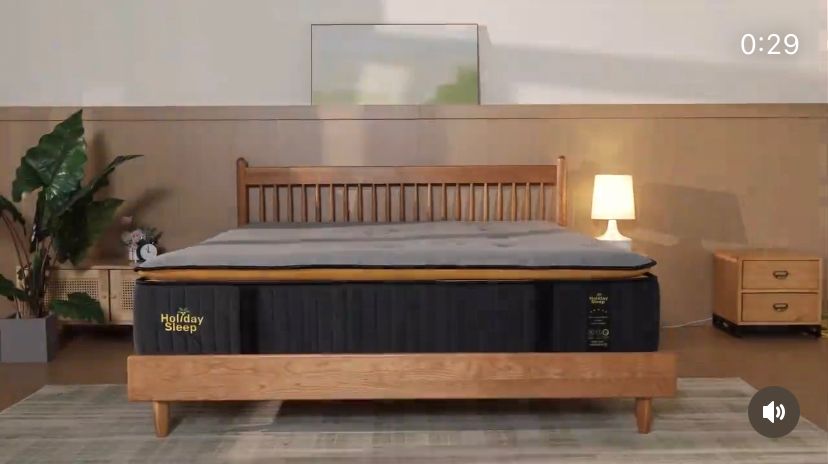One of the biggest challenges people face when shopping for a new bed is finding the right size. With many options like the California King and even the Connecticut King, what are the dimensions?
Most of us immediately think of common sizes like twin, queen, and king. But are there more options? Yes, there are! Let’s break down all bed sizes so you can make the perfect choice for your bedroom.
Overview of All Bed Sizes
Aside from the standard twin, full, queen, and king-sized beds that many are familiar with, have you heard of the California King, Alaskan King, or Wyoming King?
These are just a few of the unique options available. Before you spend your hard-earned money on a mattress or bed frame, it’s crucial to make sure the bed fits your space.
Understanding all bed sizes will help you choose the right one for your room, especially if you’re dealing with a smaller space.
A huge bed might be a tough fit in a tight bedroom, so take measurements and make a well-informed decision for your comfort and room layout.
When it comes to bed sizes, there’s a range of options to accommodate different sleepers and spaces. The most common bed sizes include:
1. Twin Bed: A Space-Saving Solution
When considering all bed sizes, the Twin bed stands as the most compact option, measuring 38 inches by 75 inches.
It’s the perfect fit for smaller spaces like children’s rooms, guest rooms, or cozy apartments. Think of it as the compact car of beds, it’s efficient, doesn’t take up much room, and still gets the job done.
While it’s great for kids or single sleepers, its smaller size may not be the best fit for taller individuals.
2. Twin XL: Ideal for Taller Sleepers
Among all bed sizes, the Twin XL offers a little extra length without sacrificing its slim width. At 38 inches by 80 inches, it’s ideal for taller individuals who need more legroom but still want a space-saving bed.
You’ll often find Twin XL beds in college dorms for this very reason, they provide more room to stretch without taking up too much floor space.
3. Full Bed: A Great Fit for Solo Sleepers
A Full bed, also known as a Double, is a step up from the Twin in both width and length. Measuring 54 inches by 75 inches, it offers more space for solo sleepers who like to spread out.
It’s compact enough to fit in smaller bedrooms, making it a popular choice when considering all bed sizes.
However, if two people are sharing, it might feel a bit cramped for comfort.
4. Queen Bed: The Most Popular Choice
When it comes to all bed sizes, the Queen bed is by far the most popular. Measuring 60 inches by 80 inches, it strikes the perfect balance between comfort and practicality.
It offers plenty of space for couples or individuals who enjoy extra room to stretch out. A Queen bed fits well in most bedrooms, providing a good mix of luxury without taking over the entire room.
5. King Bed: Luxury for Two
For those who have the space, the King bed is the ultimate in luxury. Among all bed sizes, it’s one of the largest, measuring 76 inches by 80 inches.
It’s almost like having two Twin XL beds side by side, making it the perfect option for couples who want maximum personal space while sleeping. It’s also a great choice for families who love to lounge together on lazy mornings.
6. California King: Extra Length for Taller Individuals
For taller sleepers who prioritize length, the California King is an excellent option. Measuring 72 inches by 84 inches, it’s narrower than a standard King but offers extra length for added comfort.
When looking at all bed sizes, this one is ideal for those who want more legroom without needing the full width of a King bed.
It’s a favorite for those who value extra length in their sleeping arrangement.
Each of these sizes offers distinct benefits depending on your needs, whether you’re looking for a solo bed, something to share, or a luxurious sleeping arrangement.
Comparing Different Bed Sizes
Standard bed sizes are typically based on standard mattress dimensions, which can differ from country to country. The size and style of the bed frame, including any added decoration or ornamentation, can also affect the overall dimensions.
Names and sizes of beds vary globally, with each country having its standards and terms. Additionally, two mattresses labeled the same size may have slight differences in dimensions due to variations in manufacturing, padding, or support.
To help you compare bed sizes easily, here’s a handy table summarizing the dimensions:
| Bed Size | Dimensions (in inches) |
|---|---|
| Twin | 38 x 75 |
| Twin XL | 38 x 80 |
| Full | 54 x 75 |
| Queen | 60 x 80 |
| King | 76 x 80 |
| California King | 72 x 84 |
Choosing the Best Bed Size for Your Needs
 Before you select the perfect option, it’s important to properly measure your room to ensure the bed fits well and maintains a comfortable, functional layout.
Before you select the perfect option, it’s important to properly measure your room to ensure the bed fits well and maintains a comfortable, functional layout.



